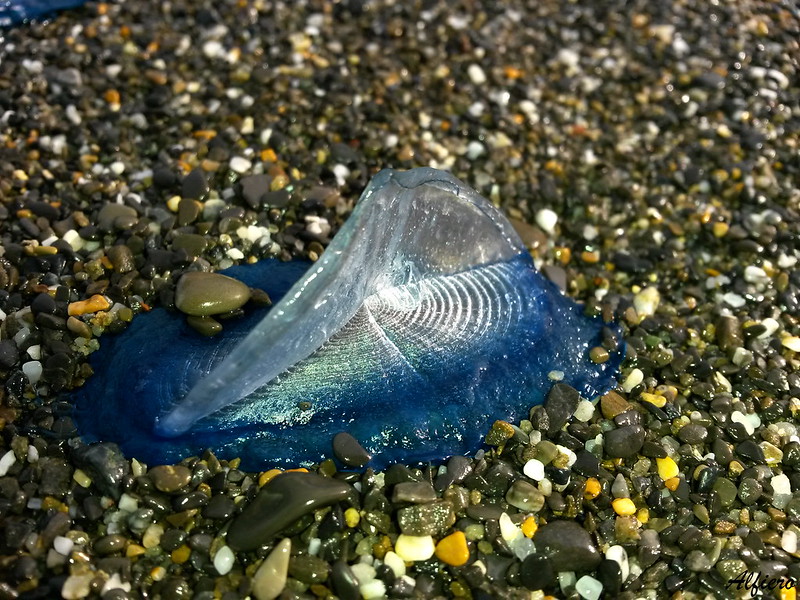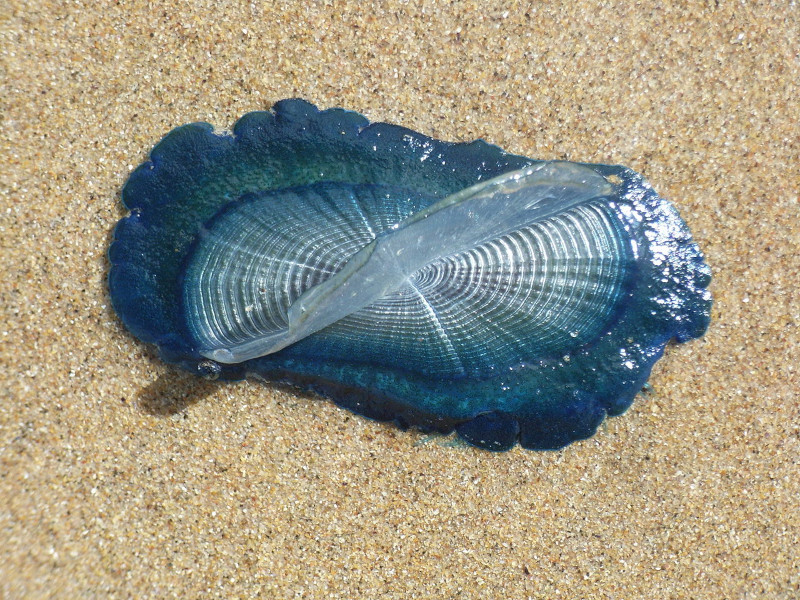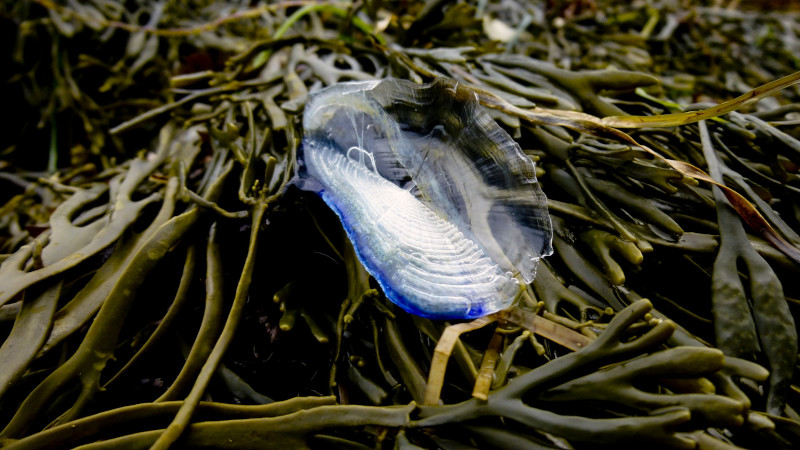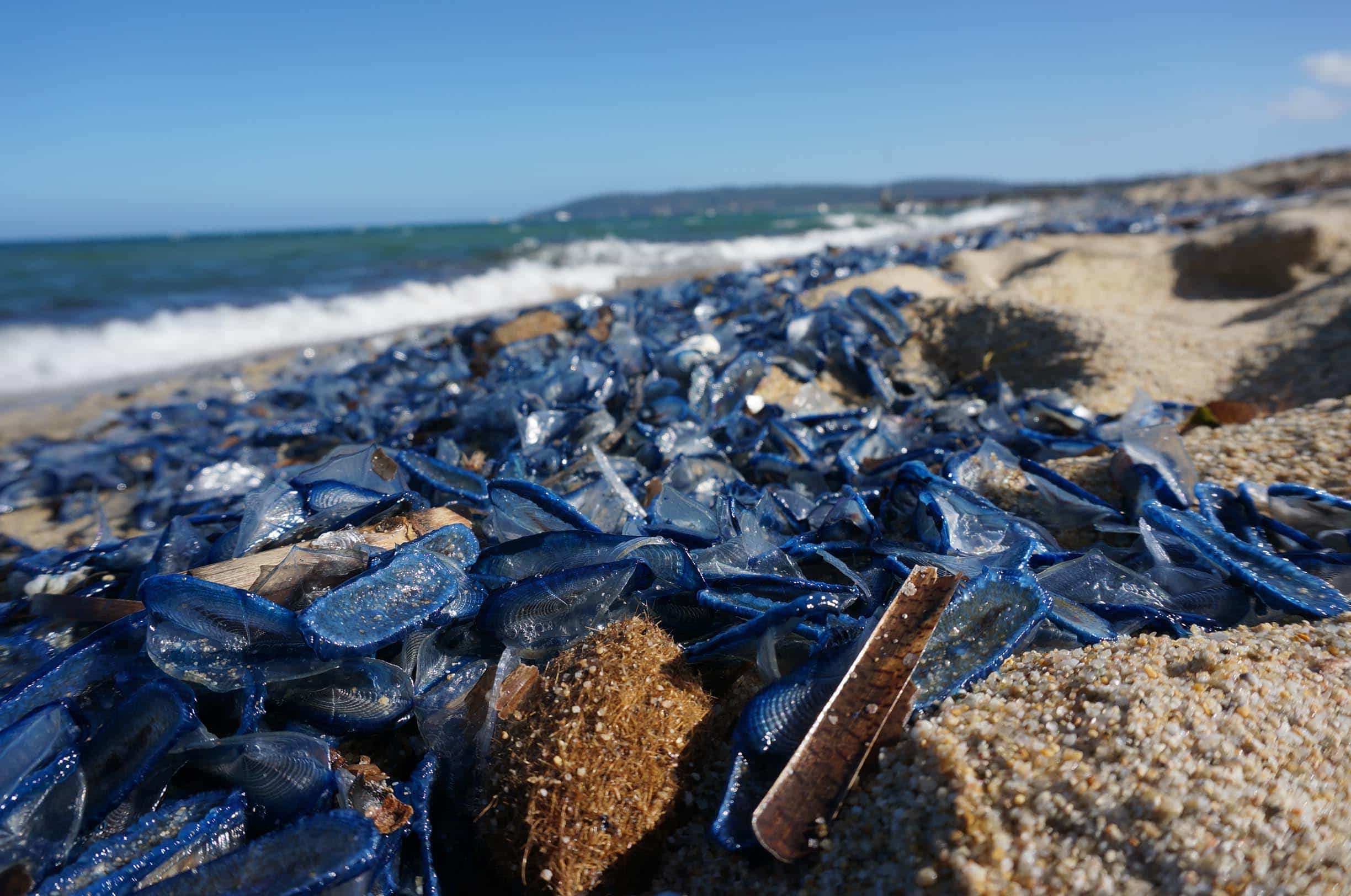Velella is the common name of a specific genus of sea creature. There is only one known species within the genus and is a free-floating hydrozoan. They live on the surface of the ocean.
This animal is endemic to virtually all the seas and oceans of the world. Just as with the jellyfish, each Velella is, in fact, a hydroid colony. Adult individuals average roughly 2.8 in (7 cm) across.
They are carnivorous in nature and their primary diet consists of plankton.
Their movements are controlled by the ocean winds. These catch the sail-shaped fin on the surface and move them across the surface.
Velella Life Cycle
The Velella lives a bipartite life cycle. During their polyp stage, they possess the sail-shaped fin for which they are most popular. During this stage, the individual polyps comprising their bodies feed on plankton. The polyps are connected by tiny canals which permit the colony of creatures to share all food consumed.
All polyps of each Velella are also either all male or all female. These polyps serve highly specific functions within the whole – for example, protection, feeding, and reproduction.
The animal reproduces through asexual means. During the reproductive stage, each Velella will produce several thousand tiny medusae.
Velella Habitat and Distribution
This animal also lives in most oceans and seas but the majority prefer warmer climates.
They also dwell in the area of the interface between the ocean and the air. The polyps will dangle about 0.4 in (1 cm) below the surface. They are at the mercy of the winds for locomotion. On occasion, this will result in strandings upon beaches. Mass strandings are common along the northern coast of North America but below we add a photo we took of a stranding in the area of St. Tropez, France.
Since the Velella breed in such vast numbers, often these strandings will literally turn the coastline blue for more than 100 mi (160 km).
Check out our articles on Pink Sea Through Fantasia, Lions Mane Jellyfish, Turritopsis Nutricula, Portuguese Man O War













Leave a Reply